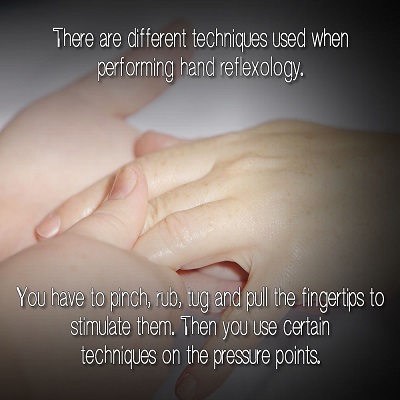 Reflexology is a healing practice that many people associate with the feet. You may have seen reflexology books that show pictures of the feet with many diagrams and meridian lines drawn. However, reflexology can also utilize applying pressure to the hands.
Reflexology is a healing practice that many people associate with the feet. You may have seen reflexology books that show pictures of the feet with many diagrams and meridian lines drawn. However, reflexology can also utilize applying pressure to the hands.
Hand reflexology is a healing practice that started hundreds of years ago and is still practiced today. It is a simple and non-invasive treatment that shares many of the principles used in acupuncture, as it also makes use of reflex or pressure points to target areas that need to be treated.
Hand reflexology operates on the same principles as foot reflexology. That is, that the human body is made up of many channels of energy, and when they are blocked, it can cause various health problems and trigger the development of disease.
However, if the blockage in these energy channels is released, then restoring balance and good health can be achieved. To remove these blockages, pressure is applied to points that correspond to the body’s channels. A trained practitioner will know where to apply pressure, and how much.
If you want to try reflexology yourself, here are some of the basic steps and techniques. Of course, you can’t expect the same level of success as a therapist would achieve! To make hand reflexology effective, the following techniques are applied.
Hand Reflexology Techniques
Various techniques are used in performing hand reflexology. Practitioners may pinch, rub, tug and pull the fingertips to achieve stimulation. There are also specific techniques to use on pressure points on different parts of the hand.
One technique is called ‘rotating.’ Rotating is done by placing your thumb on the specific pressure point and then rotating it in small circles. Another technique is called ‘creeping.’ Creeping is done by the practitioner twisting their thumb and moving it forward at the same time, while applying steady pressure to the area.
Applying Pressure
When applying pressure, use the tips of your thumb in order to stimulate the pressure points on the hands. Refer to a hand reflexology map so you can be certain that you are applying pressure to the correct areas.
The pressure you apply should be enough to elicit a reaction in the reflex points. However, it shouldn’t be painful, or at least not excruciatingly so. You may continue pressing these reflex points in circular motions for several minutes a day. Work on both hands.
Although hand reflexology is an effective way to induce relaxation and provide relief from some annoying health symptoms, foot reflexology has shown to be more effective. This is because the pressure points found on the soles of the feet are situated closer to the surface of the skin. This is also the reason why hand reflexology makes use of different techniques than those used in foot reflexology.
If you would like to give hand reflexology a go, remember that the pressure points are located far deeper beneath the skin. So, you have to apply enough pressure to reach down deep and hold for much longer than with the feet to ensure that the points have been stimulated.





